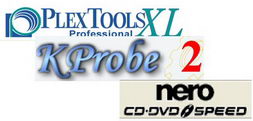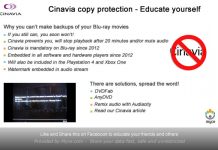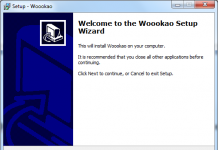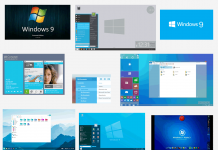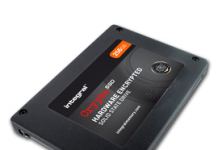|
Article: Home PI/PIF Scanning ADVERTISEMENT
|
Introduction
CDFreaks is the world's largest online source of information on optical storage technology. Our members are very serious about their optical drives, and therefore strongly encouraged to contribute to the knowledge base. The size of this repository of information is largely due to their valuable contributions in our Media and Optical hardware forums on Club CDFreaks.
Credits:
Thank you to the CD Freaks staff team for their help in completing this article.
The purpose of this article:
To assist our members in contributing information, we would like to give them some guidance in the choice of drives for assessing the quality of their recordable DVD discs. Hence, in this article, we will attempt to compare the reading abilities of some of the most popular DVD drives which are used on our forums for Disc Quality Scanning.
The main criteria used to assess the quality of a DVD burn here are the total count of 'Parity Inner Errors' (PIE) and Parity Inner Failures (PIF) that the drive reports as errors as it reads the imperfections distributed across the disc surface. Whilst these are by no means the only factors which determine a good quality burn, they are useful surrogate markers which can be straightforwardly obtained by home users. As with all surrogate markers (for example, blood pressure as an indicator of general human health), their usefulness is limited, but we believe that there is a proportional and reliable relationship between the number of PIE and PIF counts and the general 'health' of a recorded DVD. Therefore, for completeness you should be advised that Disc Quality Scanning which reports PIE/PIF on a burned media is neither an exhaustive nor completely objective measurement but will show us an important part of the full picture. Other factors also have to be considered that can't be assessed by a PI/PIF scan alone: for more information on this you may like to read our explanation in the next section of this article.
You must also take account of the fact that these drives use different scanning speeds and reading methods to report errors in a Disc Quality Scan, which unfortunately makes comparing the drives difficult. Nevertheless, the speeds we have chosen for this article are the same ones chosen as the accepted standards for our forums, except in the case of the Lite-On drive where we use the 4x scanning speed we always use in our reviews here on CDFreaks.
What are the criteria for a good scanning drive?
Read accuracy
Reading the information burned on the disc is of primary importance. Yet as described above we must take into consideration that the scanning drives used in this test are all machines aimed at the home market and that our surrogate marker for such reading accuracy is the PIE/PIF count and distribution. There will inevitably be variations (perhaps introduced by manufacturing differences) between drives of the same brand and even drives of the same model. Without access to professional analyzing hardware such as CATS or Datarius, it is not possible to say with complete certainty that any of these drives report PI/PIF errors in the same way.
Unbiased reading
The scanning drive should be as 'neutral' as possible. By this we mean the scanning drive should be able to scan media which has been burned on any of our test drives equally well. In other words, the drive should not show a bias towards burns made on the scanning drive itself.
Consistency
Our third important factor; a good scanning drive should be able to give broadly similar results with multiple scans of the same disc.
PI/PIF Scanning
For our explanation we will use KProbe and a Lite-On branded drive. In this article 3 of our 4 scanning drives use PI sum 8 and PIF sum 1 to derive a result, the exception being our BenQ drive which uses PI sum 8 and PIF sum 8 to derive its results. For comparability with our other drives which derive their PIF results with Sum 1, one can divide the PIF total by 4 with our BenQ scanning drive to compare the results, although this is an approximate value and not an absolute value. We have taken this calculation into account in the summary of each of our test discs.
Please note: the NEC ND-4570A is capable of scanning using PIF sum 8 or sum 1 and many other combinations. We choose Sum 1 for our tests.
Lite-On with KProbe:
You should first notice that this is not a scientific or professional way to test the discs. But according to our testing done in recent months, we would conclude that there is a clear link between the quality reported when scanning the disc and the playability of the disc in different devices. Also notice that different drives report different amounts of errors. K-Probe was designed to work with Lite-On DVD-Writers, so we recommend using a DVD-Writer from Lite-On. In this test we use a Lite-On SHW-16H5S DVD-Writer, as already said; remember that scans done with a Lite-On DVD-ROM or Lite-On combo drive can't be compared with the results obtained with a Lite-On DVD-Writer. Also remember that different PI/PO ECC sum settings along with different reading speeds in K-Probe will affect the result. We use these settings. PI (Parity Inner) set to summarize 8 ECC blocks, PIF (Parity Inner Failures) set to summarize 1 ECC block, reading speed: 4X CLV (Constant Linear Velocity). Setting the PI sum to 8 and the PIF sum to 1 will give a result that we may compare to the standards for DVD+R/RW and DVD-R/RW.
But what is a good scan? That is a discussion that we don't think will end soon, as different drives report different amounts of errors, some players are pickier about media than others, and so on. But as a comparison we present you with a scan from two pressed DVD discs:
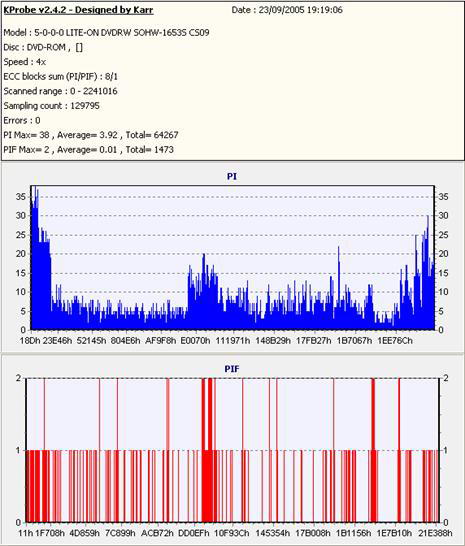
This scan shows the results from a pressed DVD-Video disc (GoldenEye).
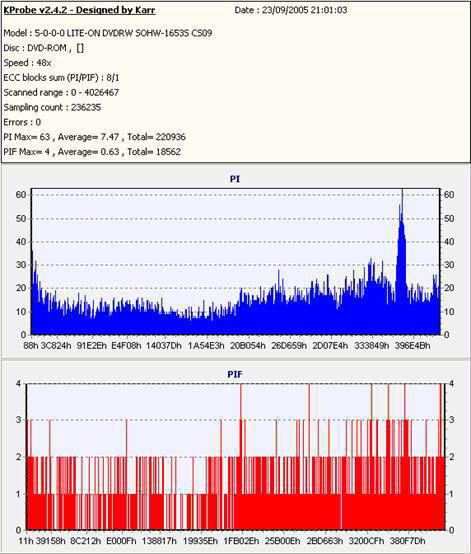
This scan shows the result from a pressed DVD-Video disk (The Green Mile). Notice the error jump when shifting to the second layer (the error level actually drops from the end of the first layer to the beginning of the second layer).
If you read below, you will see that both the pressed DVD-discs are well within the standards.
Download the ECMA 267 Standard for DVD-ROM, the ECMA 337 Standard for DVD+R/RW and the ECMA 338 Standard for DVD-R/RW at http://www.ecma-international.org if you want to look at the standards for yourself. Here is some data from the ECMA standards (same for DVD-ROM, DVD-R/RW and DVD+R/RW):
Random errors:
A row of an ECC Block that has at least 1 byte in error constitutes a PI error. In any 8
consecutive ECC Blocks the total number of PI errors before correction shall not exceed 280.
Here we see that a PI error is defined as a row in an ECC block having 1 byte or more containing errors and that the sum of PI errors in 8 ECC blocks after each other should not exceed 280 PI errors.
But what is a row and what is an ECC block? Again we refer to the ECMA standards. We do not copy and paste everything, but if you're interested, look in the ECMA standards. A row is 182 bytes long where the last 10 bytes contain PI (Parity Inner) information. An ECC block is 208 rows long where the last 16 rows contain the PO (Parity Outer) information. This gives us a maximum possible PI error amount of 208 errors per block and for 8 blocks after each other this sum is of course 8 times higher, giving a maximum possible amount of 1664 PI-8 errors. In practical use, a disc with 1664 PI-8 errors is unreadable.
According to our tests the specified max PI-8 sum of 280 for good discs seems to be a good guideline, as some readers have problems reading discs when the PI-8 errors is over 300 and most players starts to have problems when the PI-8 error level reaches 600 or more.
But what are the PIF errors that K-Probe reports? They are Parity Inner Failures, meaning errors left after PI correction. Only the ECMA 337 standard describes the Parity Inner Failures. So how is a Parity Inner Failure defined? Here is what the ECMA 337 states:
'If a row of an ECC Block as defined in 13.3 contains more than 5 erroneous bytes, the row is said to be 'PI-uncorrectable"."
In theory, an ECC block may in the worst case have 208 PIF since every ECC block is 208 rows long. But the ECMA 337 standard goes further and specifies the max amount of accepted PI Failures (uncorrectable errors) allowed on a good disc:
'In any ECC Block the number of PI - uncorrectable rows should not exceed 4."
This means that when the PIF sum is set to 1, the maximum error value should not exceed 4. The theoretical maximum value for PIF is 208 errors.
But what makes a disc unreadable? A POF (Parity Outer Failure) error will make the disc unreadable, but K-Probe does not display the POF's.
Notice that there are other aspects such as disc reflectivity, jitter, tracking errors and so on that also will affect the readability of a DVD disc '� but for this we do not have measuring equipment available.
Also, another note is that we have scanned the discs at 4X CLV speed, by lowering the speed to 2X(DVD-R/RW)/2.4X(DVD+R/RW) or 1X the amount of reported errors may drop on some discs. We scanned at 4X CLV due to lower speeds taking too much time.
To see if there is a connection between the reported amount of errors and readability of the discs we also include the reading curve from a NEC ND-4570A DVD-Writer. The reason why we have changed the reader is that some companies disliked that we used a modified firmware to obtain 16x reading speed. So to please them, we are now using a drive that reads DVD+R/-R media at 16x as default. A small speed reduction near the end is still accepted on good discs, but serious reading problems or reading failures is a bad sign.
Easier explanation on how to read the test results.
Maybe this has got too technical, and you are wondering what to look for in KProbe reports?
Use this as a guideline for good discs:
- PI (Parity Inner): No larger areas on the disc should exceed 280 PI-8 errors, do not worry too much about high single spikes that exceed 280.
- PIF (Parity Inner Failures): No larger areas on the disc should exceed 4 PIF-1 errors, do not worry too much about high single spikes that exceed 4.
And as always; lower is better ![]()
Now let's head on to the next page where we will take a look at our scanning and burning drives.

